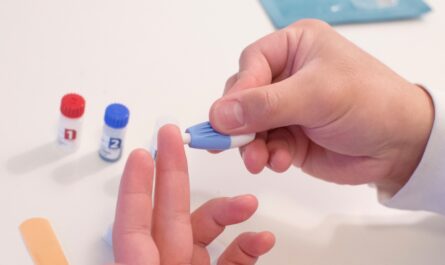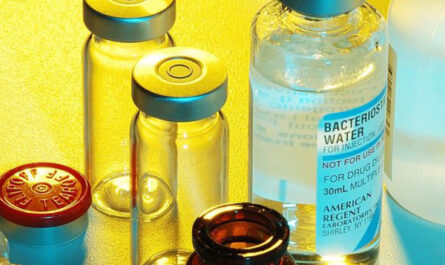Wound care has come a long way from basic cleansing and covering of wounds. Traditional wound dressings helped manage exudate and prevent infection to some extent, but wound healing often remained a prolonged process. With recent advances, scientists have gained a deeper understanding of the complex microbiome involved in chronic wound pathophysiology. This has paved the way for development of targeted anti-biofilm dressings that actively disrupt biofilms and promote faster healing.
The Role of Biofilms in Chronic Wounds
Chronic, non-healing wounds are typically colonized by polymicrobial biofilms consisting of bacterial cells embedded in an extracellular matrix of polysaccharides, proteins, and DNA. By conferring an survival advantage through collective behavior, biofilms impede penetration of antibiotics and host immune cells. They provide a haven for persistent infections that subvert the normal process of wound repair. Treatment of underlying disease, surgical debridement, and antibiotics alone often fail because biofilms evade elimination. Alternative strategies are needed to directly combat the slime-encased communities at the wound bed.
Mechanisms of Action of Anti-Biofilm Dressings
The first generation of anti-biofilm dressings work through various mechanisms like chelating bacterial adhesion, degrading extracellular polymeric substance, or penetrating biofilm architecture to disrupt established structures.
Ionic silver dressings take advantage of silver’s broad-spectrum antimicrobial activity. Nano-crystalline silver continuously releases low doses of ionic silver which binds bacterial cell walls and disrupts their metabolism. It also prevents the excessive inflammation seen with traditional silver treatments.
PHMB or polyhexanide containing dressings act as cationic biocides, electrostatically binding to negatively charged residues on bacterial cell surfaces and membranes. This alters their integrity and permeability, inducing cell death. PHMB is also hydrophilic, drawing exudate away from the wound bed into the dressing matrix.
Nanocrystalline silver combined with PHMB or Iodine work synergistically to tackle drug resistance. Iodine destroys biofilm polymers while silver eliminates embedded bacteria, preventing regrowth.
Enzymatic dressings containing proteases and glucosidases break down extracellular polymeric substances like polysaccharides, protease, DNA and actin that form the biofilm matrix and scaffolding. This destabilizes the structure and exposes embedded bacteria to the host defenses and topical agents.
Other Anti-Biofilm Wound Dressing modifying components in advanced dressings include chelators that bind biofilm adherence factors like calcium, fatty acids that disrupt bacterial quorum sensing, and antibiotics that have anti-biofilm activity at sub-MIC levels.
Clinical Evidence of Efficacy
Several randomized controlled trials and real-world clinical studies have proven the superior performance of anti-biofilm wound dressings. Compared to standard dressings, they achieve significantly higher rates of infection resolution and increased healing within 4-6 weeks for various acute and chronic wounds including diabetic foot ulcers, pressure ulcers, and post-operative and trauma wounds.
Anti-biofilm dressings have been successfully used as the primary treatment in mild-moderate wound infections, avoiding the need for systemic antibiotics in many cases. For severe or resistant infections, they help contain the infection until definitive antimicrobial therapy takes effect or surgical debridement can be performed. Recurrence rates after wound closure are also lower with biofilms having been controlled beforehand.
Safety profiles compare favorably to chemical based topical agents and older silver containing products. Adverse effects are mild and transient in majority of cases. Dressings cause minimal pain on application or removal and can stay in place for several days without requiring frequent dressing changes, a major advantage over traditional dressings. Combined with improved efficacy, anti-biofilm dressings achieve better clinical outcomes in a more cost effective manner.
Future Prospects
Ongoing research continues to refine the multi-target activity of these agents for even greater anti-biofilm potency. Novel materials and drug delivery mechanisms will help prolong active agent release, fine tune levels at the wound site, and ensure penetration into hard to reach biofilm locales. Imaging and diagnostic techniques may enable real-time monitoring of biofilm disruption. Combination products incorporating growth factors, cellular components or small molecule signaling agents hold promise to facilitate synchronized healing responses after biofilms are cleared. As the clinical knowledge base expands, anti-biofilm dressings will increasingly become the standard of care for managing both acute and refractory chronic wounds.
In summary, advanced anti-biofilm wound care represents a major leap forward in our fight against pathogenic biofilms that thwart normal wound repair. Leveraging deeper biological insights, these tailored dressings actively disrupt biofilm structures, eliminate embedded bacteria and allow the wound microenvironment to revert back to a state conducive for healing. Their superior efficacy, safety and cost profiles make them a transformative technology paving the way for improved patient outcomes in chronic and complex wound management.
*Note:
1. Source: Coherent Market Insights, Public sources, Desk research
2. We have leveraged AI tools to mine information and compile it



